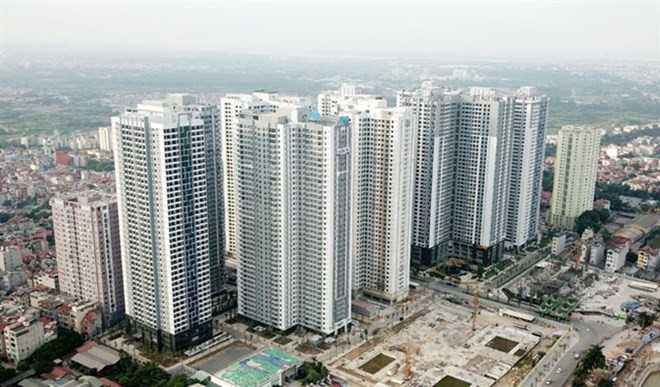
Hoang Cong Tuan, head of the Macroeconomic Department at MB Securities, said that property developers were still mainly raising capital from banking loans and from customers, with payment following construction progress.
However, bond issuance is proving an effective channel and is forecast to become a major tool for raising capital as credit policies for the property sector are gradually tightened, Tuan said.
According to Nguyen Thi Huong Giang from Saigon Securities Inc, with the recovery of the real estate market during the past three years, many foreign investors were showing interest in investing in listed or public property companies.
Giang said that foreign investors now tended to seek to buy stakes or convertible bonds of real estate companies as a channel for investment.
Experts said that during the downturn of the property market in 2011-2013, bond issuance to raise capitals from investors was difficult while direct investment was more effective.
However, bond issuance is more advantageous when the property market and the securities market are in recovery as they are today. Recently, several property developers geared up for bond issuance.
For example, Novaland raised 310 million USD through issuing bonds to buy land and develop projects.
Sacomreal also planned to issue 73 million bonds to raise capitals for M&A deals.
According to Tuan, banks have been more cautious about providing loans for property development since 2017.
The central bank regulated that the ratio of short-term funds used for medium and long-term loans would be reduced from 50 percent in 2017 to 45 percent in 2018 and 40 percent from 2019. The property sector mainly needs medium and long-term loans.
The Government recently issued a resolution related to its August meeting which required tight control of credits for the property sector.
Statistics of the central bank showed that loans for the property sector increased by 2.19 percent in the first half of this year, much lower than the overall credit growth of 6.16 percent.
Outstanding loans in the real estate sector accounted for 7.5 percent of the economy’s total outstanding loans compared to 15.8 percent in 2017 or 17.1 per cent in 2016.
According to Duong Thuy Dung from real estate services firm CBRE Vietnam, the credit policies for the property sector were tightened gradually according to a long-term roadmap. Thus, firms could have time to look for alternative sources of capital such as bond issuance, cooperation with foreign investors or finding partners for each project.-VNS/VNA
























